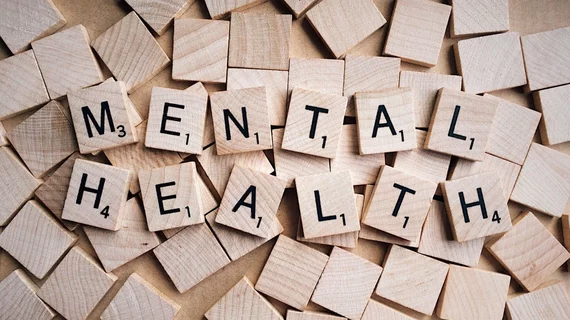Q&A: Medicaid evolving to meet the mental health and material needs of patients
Gary Jessee is the former Deputy Executive Commissioner for Medical and Social Services in Texas, the largest state division in the Health and Human Services System. In his 23 years in the role, he managed a $50 billion budget to manage state health plans and community service programs. Now he is a senior vice president at consultancy firm Sellers Dorsey, leading a team of former state government officials, policy directors and managed care executives to help hospitals and physician groups tackle public health challenges.
HealthExec sat down with Jessee to discuss the rapidly changing health policy landscape, particularly as it pertains to creative new ways states are using Medicaid funds to better the lives of patients, both at home and when they visit a doctor. The interview has been edited for clarity and conciseness.
HealthExec: Recent modifications to the Mental Health Parity and Addiction Quality Act require insurers to reimburse supportive services, like behavioral health, as easily as medical care. Is there a benefit for Medicaid patients?
Jessee: The new rule does not apply to Medicaid plans themselves; Medicaid has largely been front and center with adopting mental health parity. The Biden rule expands those standards to group employers and employer-sponsored plans.

This still has a benefit to Medicaid because of state programs that make flexible use of funds, often through 1115 demonstrations waivers. For example, in Texas there is the Health Insurance Premium Payment Program that allows the state to provide patients with private coverage. So now the standard for access to mental and behavioral health services will be the same, whether you’re on Medicaid or have private insurance.
It seems that would inherently improve access to specialty services, like substance abuse mitigation. Is that the idea, to produce a trickle-down effect?
It’s more like the tide raising all boats, benefiting everyone. Addressing this increasing need around mental health is part of the conversation we’ve been having for decades about improving access to medical services.
The goal of any Medicaid director is getting people the right care at the right time to avoid a more costly, unnecessary use of service. If you think about the key goal around mental health parity, what that means is you cannot make it harder for people to access mental health and substance use disorder services than you would medical benefits.
If you zoom out, creating that parity benefits government programs. For example, if somebody can’t hold a job or needs emergency housing because they have a severe, persistent mental illness, then getting them the care they need might ultimately mean they’re able to hold a job, get commercial insurance and be emancipated from Medicaid. In that scenario, Medicaid is the vehicle to ensure a patient is getting what they need to be productive and independent.
Speaking of 1115 waivers, we’re seeing more state Medicaid initiatives that go beyond reimbursing care. For example, North Carolina used funds to pay off the medical debt for its residents.
Yeah, I always tell people, it's not your not your granddad's Medicaid program. Ultimately the funds have to be used for something health related, but there's a better understanding that healthcare is attached to social needs. For example, states are also using funds for rent assistance, because that is a factor in ensuring access to care services.
Right now, we’re seeing a real big focus around non-traditional drivers of health, what people would refer to as ‘social determinants.’ Access to food and nutrition is exploding; access to transportation has been a key benefit all the while; and now Medicaid is being used for housing. Twenty years ago, nobody would even think Medicaid would have a role in supporting housing. Things have definitely shifted.
Will this have a broader impact on society? Could Medicaid be a vehicle to improve what private insurers cover as far as social determinants?
Yes, I think expanding Medicaid sends a message and builds the framework to cover care the same for everyone. Whether you get your insurance from a state or federal exchange, or from work, or you’re on Medicaid, we want people to have the same access to care.
This benefits providers because it expands capacity, and for health plans it helps them to build better networks for group plans. It also increases participation in services, for providers and patients alike.
For example, mental health access is a challenge because there's not a sufficient number of qualified providers. When people dig into why, it's often reimbursement. But, if a health plan has a larger number of individuals to manage that have mental health needs, they will have to cover those services and reimburse providers at a fair rate as part of their contracts. States have a mechanism where Medicaid reimbursement rises to reflect increased care needs, and health plans have a similar incentive to meet the full needs of patients in order to control costs and produce the best outcomes.
As things stand currently, what patients benefit from state Medicaid plans the most, and what are some of the biggest challenges for keeping the programs viable?
When people think of Medicaid, they often think of pregnant women and children—those remain the primary beneficiaries. Depending on the state, over 50% of births are paid for by Medicaid. If a state has 5 million people on Medicaid, the majority of those people are pregnant women and children, both of whom are likely to be healthy and once the mother has her baby, she is emancipated from Medicaid. The costs are manageable.
Medicaid benefits are also meeting the needs of individuals with physical disabilities, or individuals with intellectual and developmental disabilities—and those patients bring high costs. If you have a patient who needs 24-hour nursing, or somebody who needs in-home services, their care utilization can be quite high.
The fact is, with Medicaid there's about 40% of your population that uses 60% of the benefits. I can tell you from my experience as Medicaid director in Texas, that's what our data said. And it’s because, for those 40%, care is resource intensive. So, it’s very important to manage care appropriately to produce the best outcomes and contain costs.

